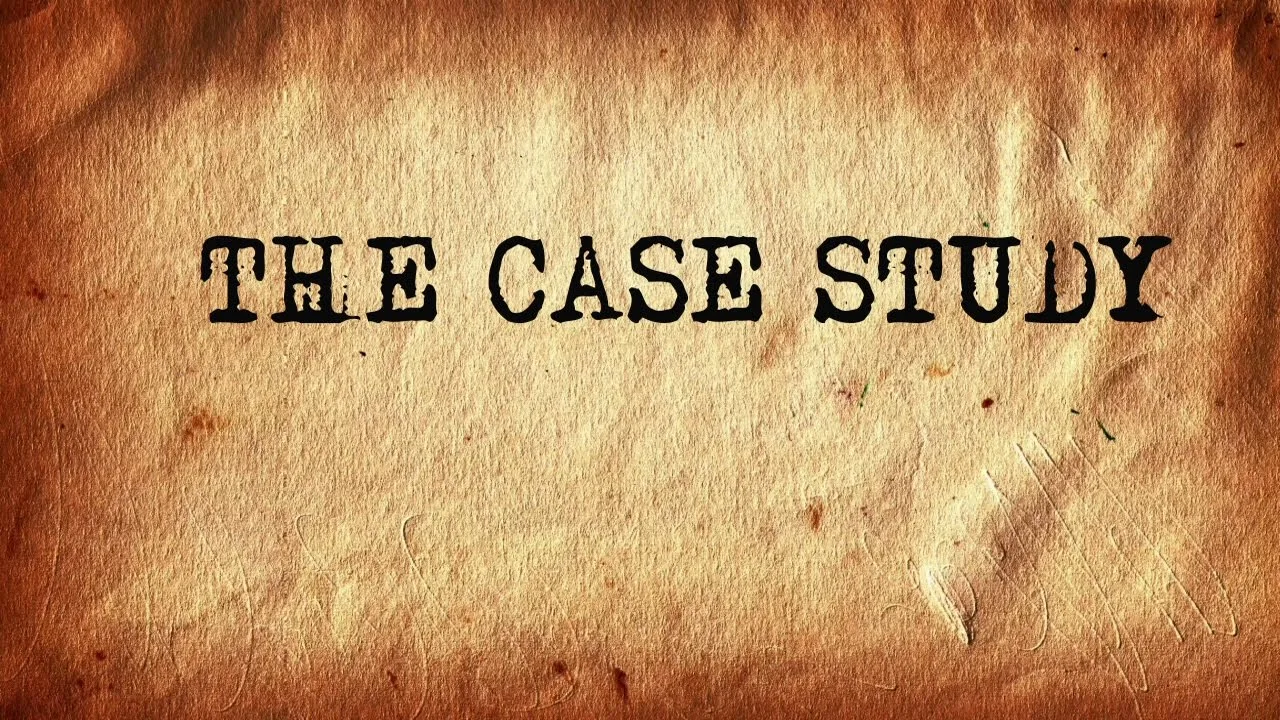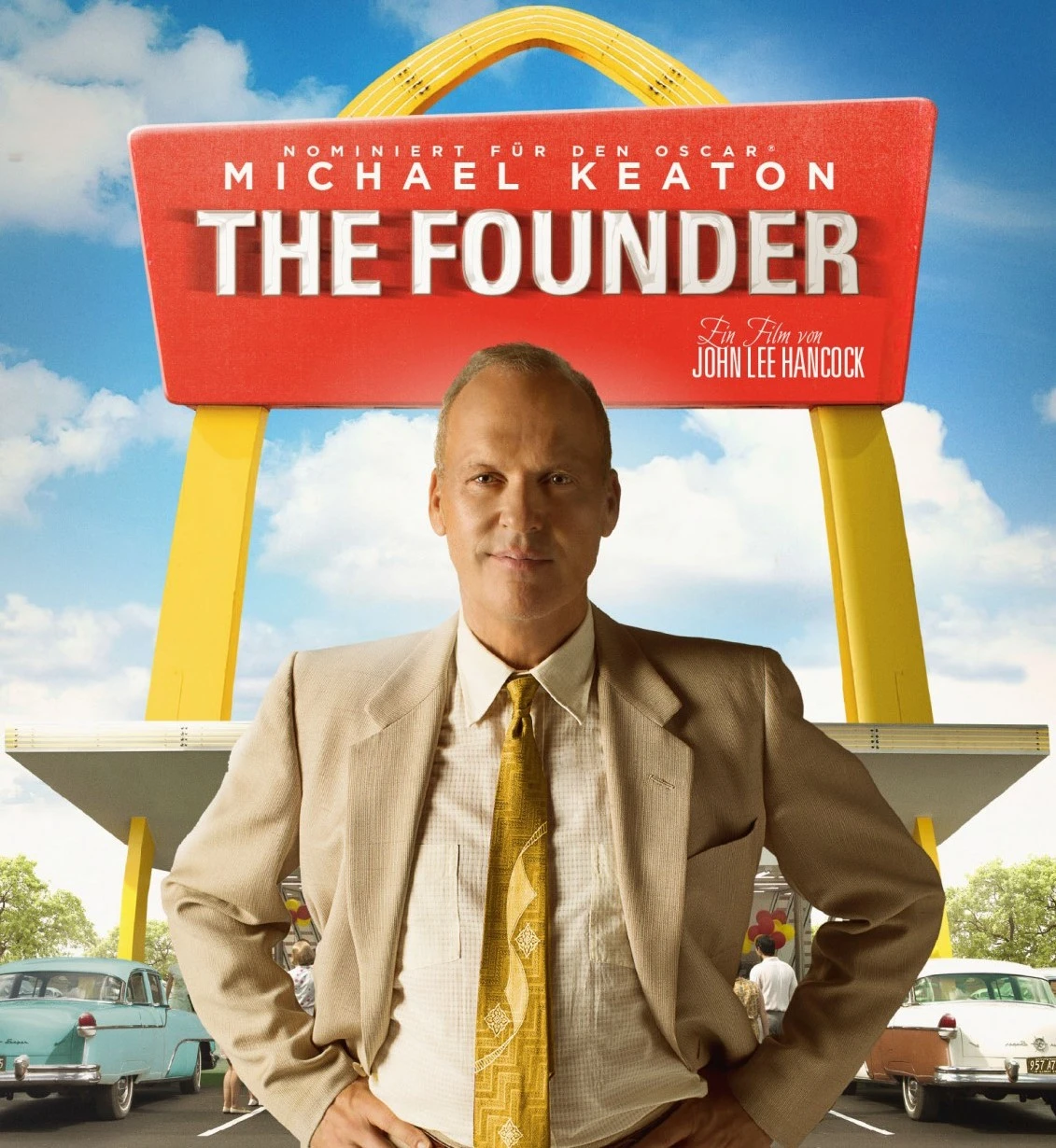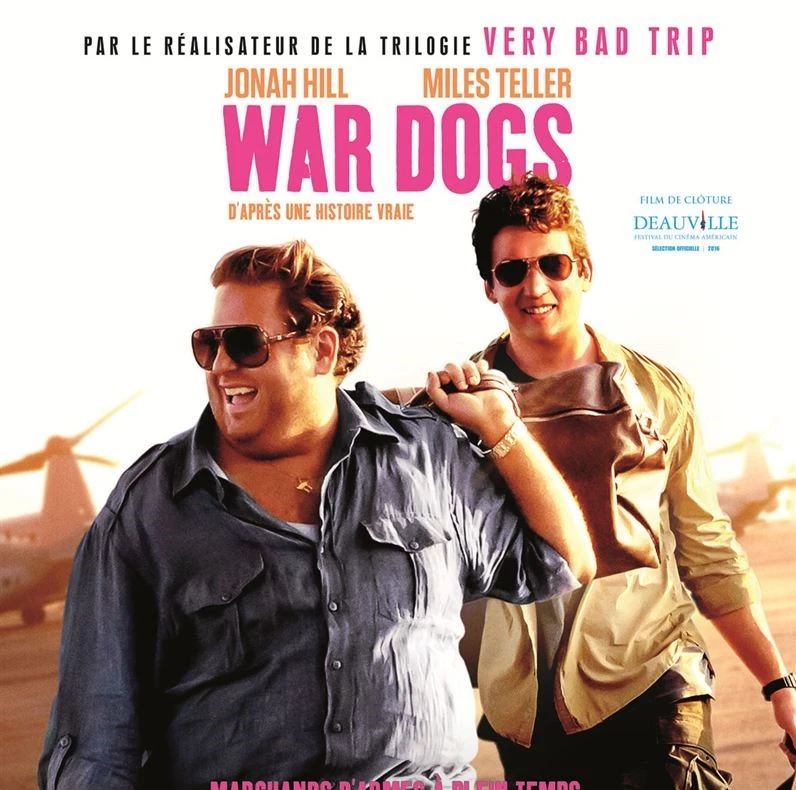SME Supply Chain Management in South Africa
Efficient Supply Chain Management Boost Profits for SMEs: Supply chain management case studies
Elevate your supply chain management strategy through a comprehensive approach grounded in data analysis and collaboration. Explore case studies to identify inefficiencies and areas for improvement within the entire supply chain ecosystem.
Essential Supply Chain Management Case Studies for SMEs
Explore real-world examples illustrating how effective SCM practices have propelled SMEs to new heights, enhancing their competitiveness and resilience amidst market fluctuations. From streamlined inventory management to agile logistics solutions, these case studies illuminate the transformative potential of strategic SCM initiatives across diverse industries and operational scales. Whether you're a budding entrepreneur seeking to fortify your supply chain infrastructure or an established SME aiming to refine existing processes, this curated collection offers actionable guidance and inspiration for navigating the complexities of modern supply chain dynamics. Elevate your business prowess and unlock untapped opportunities with the wisdom gleaned from these illuminating case studies.
Key Considerations
- In examining supply chain management case studies, businesses must prioritise a holistic understanding of the entire supply chain ecosystem. Firstly, they should focus on comprehensive data analysis to identify potential inefficiencies, bottlenecks, and areas for improvement. Understanding the end-to-end process allows businesses to pinpoint critical touchpoints where optimisation and innovation can be applied. This analysis should not only encompass internal operations but also extend to the external factors influencing the supply chain, including market dynamics, regulatory changes, and geopolitical considerations.
- Secondly, collaboration and communication across the supply chain network are paramount. Successful case studies often emphasize the importance of building strong relationships with suppliers, distributors, and other stakeholders. Implementing effective communication channels and collaboration tools can streamline information flow, enhance visibility, and foster a more responsive and adaptive supply chain. Moreover, businesses should consider leveraging technology solutions such as blockchain, IoT, and data analytics to enhance transparency, traceability, and overall efficiency throughout the supply chain. By embracing a holistic approach and fostering collaborative relationships, businesses can navigate complexities and create resilient and agile supply chain systems.
Supply Chain Management is about increasing efficiency by coordinating the efforts of the various entities in the supply chain. This can result in a business gaining a competitive advantage over its competitors and improving the quality of its products, both of which can lead to increased sales and revenue. This skills programme provides a platform and tools for entrepreneurs and business managers to develop and manage supply chain management system.
Supply chain management case studies

Written by: Malose Makgeta
MBA with 20+ years experience in SME development and funding. LinkedIn Profile
Supply Chain Management - Entrepreneurship Lessons from Movies The Founder, War Dogs and Moneyball
- The Founder (McDonald's): TThe McDonald's story exemplifies a successful approach to supply chain management by integrating a comprehensive understanding of its entire ecosystem. Through meticulous data analysis, McDonald's identified areas for improvement in its supply chain, streamlining operations and enhancing efficiency. Notably, the company embraced a collaborative model, building robust relationships with suppliers and stakeholders, which played a pivotal role in ensuring a seamless flow of resources and minimising disruptions. Leveraging technology, McDonald's implemented innovative solutions such as automated ordering systems and real-time data analytics, enhancing visibility and responsiveness. The case study underscores the significance of a holistic, data-driven, and collaborative strategy in creating a resilient and efficient supply chain, ultimately contributing to McDonald's sustained success on a global scale.
- War Dogs (AEY): The AEY story strategically evolved from local defense accessory supply to becoming a prominent player in the global defense industry, showcasing a forward-thinking approach. The decision to supply arms to the US defense not only expanded market reach but positioned AEY on the global stage, demonstrating adaptability and ambition. This transition reflects AEY's ability to navigate dynamic market conditions, coupled with a commitment to customer satisfaction by meeting the demands of a more complex clientele. The international presence gained enabled AEY to leverage expertise, establishing itself as a significant contributor to the global defense supply chain. In essence, AEY's calculated and successful strategic shift exemplifies their capacity to capitalize on opportunities within the competitive landscape of the defense industry, marking a noteworthy journey of business development and expansion.
- Moneyball (Oakland A's): The Oakland A's, under the leadership of Billy Beane, revolutionised supply chain management principles in baseball by applying a data-driven approach. Their case study, popularised by the book "Moneyball," showcased how detailed data analysis could uncover undervalued players and market inefficiencies. Beane focused on comprehensive player performance metrics, identifying opportunities for optimisation within the team roster. This holistic understanding of player statistics allowed the A's to make strategic, cost-effective decisions and compete successfully against wealthier teams. Furthermore, the collaborative aspect of the approach involved fostering communication and trust between the coaching staff, players, and front office, creating a cohesive and adaptable organisation. The A's innovative use of data and collaboration mirrors the principles outlined in effective supply chain management, emphasising the importance of holistic analysis, collaborative decision-making, and leveraging technology to achieve sustainable success.
CONTEXT
Business plan development is the process of creating a business strategy and plan to help a business implement its vision and achieve its goals over time. The primary goal of business plan development is to create a strategy for moving a business from its current state to its desired state through a series of business actions. The skills programme provides entrepreneurs and business managers with a platform and tools for business strategic planning.
Click here and draft your business plan in minutes
To request tailored accredited training and enterprise development services, contact us at businessplan@superdealmaker.com.
Get List for Funding Opportunities in Minutes, Click Here
To request tailored investment banking services, contact us at businessplan@superdealmaker.com.
Supply chain management case studies lessons from case studies:
Lessons from The Founder - McDonalds

Movie Description
The Founder is one amazing movie and is a must watch for every entrepreneur. It not only gives you life lessons and but also few path breaking business lessons. The Founder is story of Ray Crock. How a 52-year-old sales man turned two brothers (McDonald Brothers) small eatery into the world’s biggest restaurant business. McDonald brothers had invented the speedy system a process to deliver food in seconds but couldn’t develop business beyond their one restaurant. This is Ray Crock comes re-imagines the whole fast food business and created the McDonald Corporation we see today.
Expected Outcomes
The Founder is jam-packed with practical business advice. It pulls back the curtain to reveal the secrets of Ray Krocs transformation of McDonalds into one of the worlds largest fast food restaurants. Entrepreneurs and business owners will discover: “Nothing in this world can take the place of persistence. Talent wont; nothing is more common than unsuccessful men with talent. Genius wont; unrewarded genius is practically a cliché. Education wont; the world is full of educated fools. The purpose of this case study is to provide a practical case study on how to build a business in the manufacturing sector—that is, a business that takes raw materials and adds value to them to produce a product.
Rational
Ray Kroc, a 52-year-old over-the-hill salesman struggling to sell multimixers, turned two brothers innovative fast food eatery, McDonalds, into the worlds largest restaurant business through a combination of ambition, persistence, and ruthlessness. If you are a small business owner looking to learn about scaling, franchising, and brand building, McDonalds is the one business to look to as a reference, as they have done this incredibly well. They are a true American business success story and icon. The story of how McDonalds came to be is told in a new film, The Founder, and we learn the true story of Ray Kroc, the traveling salesman who is credited with making McDonalds what it is today, and its original founders, Richard and Maurice McDonald.
Key Lesson
None
Supply Chain Management Lessons from "The Founder"
- Data-driven Decision Making: The movie "The Founder" showcases how Ray Kroc, the founder of McDonald's, used data and analysis to make informed business decisions. This highlights the importance of leveraging data in supply chain management to drive strategic decision-making, optimise operations, and enhance overall performance.
- Streamlining Processes: The movie illustrates how Ray Kroc revolutionised the fast-food industry by implementing efficient processes and standardisation. This teaches us the significance of streamlining supply chain processes, eliminating waste, and optimising efficiency to deliver products or services more effectively and meet customer demands efficiently.
- Franchising and Expansion: "The Founder" portrays the rapid expansion of McDonald's through a franchising model. This highlights the potential of leveraging partnerships and franchising to scale and expand the supply chain network, reach new markets, and capitalize on growth opportunities.
- Supplier Relationship Management: The movie showcases the importance of building strong and mutually beneficial relationships with suppliers. Ray Kroc forms a strategic partnership with a reliable milkshake machine supplier. This emphasises the significance of supplier relationship management in securing quality supplies, negotiating favorable terms, and ensuring a reliable supply chain.
- Quality Control and Standardisation: "The Founder" emphasises the significance of consistent product quality and standardised processes. Ray Kroc emphasises the importance of maintaining high standards across all McDonald's restaurants. This highlights the need for effective quality control measures, standardised operating procedures, and continuous monitoring to ensure consistency and customer satisfaction throughout the supply chain.
- Market Research and Customer Insights: The movie highlights the value of market research and understanding customer preferences. Ray Kroc's success is attributed to his recognition of the changing demographics and consumer trends. This teaches us the importance of conducting market research, gathering customer insights, and tailoring supply chain strategies to meet evolving consumer demands.
- Logistics and Distribution: "The Founder" touches upon the logistics and distribution challenges faced by McDonald's during its expansion. This underscores the importance of efficient logistics and distribution management to ensure timely delivery, minimise costs, and optimise the flow of goods within the supply chain.
- Brand Building and Marketing: The movie demonstrates the significance of brand building and marketing in establishing a successful business. Ray Kroc invests in advertising and promotions to create brand awareness and attract customers. This highlights the importance of marketing strategies and brand-building efforts to enhance visibility, reputation, and customer loyalty within the supply chain.
- Innovation and Adaptability: "The Founder" portrays the necessity of innovation and adaptability to stay competitive. Ray Kroc embraces new ideas and introduces innovative concepts like the "Speedee Service System." This emphasises the importance of fostering a culture of innovation, adapting to market changes, and continuously improving supply chain processes and offerings.
- Ethics and Social Responsibility: The movie addresses ethical considerations in business operations. It explores the tension between profit motives and ethical behavior. This reminds us of the importance of ethical conduct, social responsibility, and sustainable practices in supply chain management to maintain trust, reputation, and long-term success.
The McDonald brothers were running a successful business, but Ray Kroc recognised that the systems they developed could be replicated and expanded. While the McDonald brothers were hesitant, they agreed to bring in Kroc to help them expand and grow. This is where things began to go wrong. Kroc first cheated on his adoring and supportive wife. Kroc then took advantage of his position with the brothers and nastily forced them to renegotiate (break) his contract with them, owing in part to his frustration with the brothers' refusal to expand and grow at the rate he desired. Finally, Kroc never paid the brothers the 1% share of McDonald's profits that he promised them after forcing them out of the business.
Kroc built one of the world's most popular fast food chains by emphasising the replicability of McDonald's processes and operations. Not only has his model made McDonald's a household name, but it has also ensured efficient operations and a nearly identical experience for customers everywhere in the world.
One of the most important lessons to learn from Kroc's McDonald's model is to implement and stick to a successful system. McDonald's defines this as one based on quality, service, cleanliness, and value. His system is also a three-legged stool, which means that the model can only succeed if franchisees, employees, and McDonald's suppliers all collaborate. At the end of the day, a business is only as successful as the sum of its parts, and Kroc's business acumen ensured that's would be the system to beat for the foreseeable future.
The McDonald brothers were running a successful business, but Ray Kroc recognised that the systems they developed could be replicated and expanded. While the McDonald brothers were hesitant, they agreed to bring in Kroc to help them expand and grow. This is where things began to go wrong. Kroc first cheated on his adoring and supportive wife. Kroc then took advantage of his position with the brothers and nastily forced them to renegotiate (break) his contract with them, owing in part to his frustration with the brothers' refusal to expand and grow at the rate he desired. Finally, Kroc never paid the brothers the 1% share of McDonald's profits that he promised them after forcing them out of their business.
Ray Kroc was looking for a partnership once more, and he was successful in creating the most integrated, efficient, and innovative supply system in the food service industry. These supplier relationships have grown over the years. In fact, many of today's McDonald's suppliers got their start with a handshake from Ray Kroc.
Look After The Stores
"There is a basic conflict in trying to treat a man as a partner on the one hand while selling him something at a profit on the other. Once you get into the supply business, you become more concerned about what you are making on sales to your franchisee than with how his sales are doing. The temptation could become very strong to dilute the quality of what you are selling him in order to increase your profit. This would have a negative effect on your franchisee's business, and ultimately, of course, on yours."
"Many franchise systems came along after us and tried to be suppliers, and they got into severe business and financial difficulty. Our method enabled us to build a sophisticated system of purchasing that allows the operator to get supplies at rock-bottom prices."
"Convincing [suppliers in California] that we were an honest operation, that we protected our operators, and that we would take no kickbacks, was a big order. They could not be persuaded that if they would supply McDonalds restaurants with items the way we wanted them at prices that would allow us to sell hamburgers for fifteen cents, our growth would put them on Easy Street."
"I said [to Harry of Interstate Foods when he wanted to show his appreciation by giving a sign or a clock for the stores.] ".. let's get this straight, once and for all. I want nothing from you but a good product. Don't wine me, don't dine me, don't buy me any Christmas presents. If there are any cost breaks, pass them on to the operators of McDonald's stores."
"[I told Frank Cottee when he was drafting the franchisee licensing agreement ..] "you can hogtie these guys with all the ifs, buts and whereases you like, but it's not going to help the business one goddamn bit. There'll be just one great motivator in developing loyalty in this operation. That is if you got a fair, square deal, and the guy makes money. If he doesn't make money, I'm in a peck of trouble. I'm gonna lose my shirt. But I'll be right out there helping him and doing all I can to make sure he makes money'. As long as I do that, I'll do just fine."
"We are an organisation of small businessmen. As long as we give them a square deal and help them make money, we will be amply rewarded."
Kroc wrote that he "wanted to build a restaurant system that would be known for food of consistently high quality and uniform methods of preparation." The aim "was to ensure repeat business based on the system's reputation rather than on the quality of a single store or operator. I was a battle-scarred veteran of the business wars, but I was still eager to get into action. I was 52 years old. I had diabetes and incipient arthritis. ... But I was convinced the best was ahead of me."
Lessons from War Dogs - AEY

Movie Description
War Dogs is based on one of those true stories that no one would actually believe if it were written as fiction. In the mid-’00s, two kids named Efraim Diveroli and David Packouz managed to secure a $300 million contract with the United States government to supply allied forces in Afghanistan with arms and ammunition. They then embarked on a globetrotting misadventure that saw them dealing with shady crooks and corrupt politicians and dangerous soldiers in the name of making a fortune. Most astonishingly, both men were twenty something stoners with no experience handling anything of this size or scope. As much as the film may diverge from the truth for the sake of cinematic drama, the core story remains jaw-droopingly true.
Expected Outcomes
There are several important lessons that any aspiring new entrepreneur can learn from Hollywoods portrayal of business in these business movies. Two friends embark on that journey, and they do what any excited real entrepreneur or business manager would do: they hustle, work like dogs, read and study all night, and have a do-whatever-it-takes attitude. If a deal is about to fall apart, they hustle even harder and manage to keep it together. The purpose of the case study is to provide a practical case study on how to build a business in the facilitated network sector, which makes money by allowing people to exchange information, products, and services.
Rational
Entrepreneurs are constantly learning on the job, from their peers to their idols, and, most importantly, from their own mistakes—the road to owning your own business is littered with lessons learned. However, learning some of these lessons before embarking on your own journey only makes the process easier. i.e. Cutting corners can be an expensive proposition - Finding the best deals can be wise but make sure that you consider long-term costs and the time that you might have to invest to fix problems.
Key Lesson
None
Supply Chain Management lessons from "War Dogs"
The movie "War Dogs" offers several lessons related to supply chain management. The story follows two entrepreneurs who enter the world of international arms dealing. While their actions are illegal and unethical, the movie highlights certain aspects of supply chain management that can be discussed in a business context.
Lesson 1: Supplier Relationship Management
The movie showcases the importance of building strong relationships with suppliers. The protagonists face challenges when dealing with unreliable suppliers, leading to product quality issues and delayed deliveries. This emphasises the significance of supplier selection, evaluation, and ongoing collaboration in supply chain management.
Lesson 2: Risk Management
"War Dogs" demonstrates the risks associated with engaging in illegal and unauthorised activities. From a supply chain perspective, it emphasises the need for proper risk assessment and mitigation strategies. Businesses should identify and manage risks in areas such as supplier reliability, compliance, and legal considerations.
Lesson 3: Demand Forecasting
The movie highlights the importance of accurate demand forecasting. The protagonists face challenges when they overestimate demand, leading to excess inventory and financial losses. This emphasises the need for effective demand forecasting techniques to align production and inventory levels with customer demand.
Lesson 4: Logistics and Transportation
The movie showcases the complexities of logistics and transportation in a global supply chain. The characters encounter challenges related to shipping, customs, and international regulations. This emphasises the importance of efficient logistics management, including route optimisation, customs compliance, and timely delivery.
Lesson 5: Ethical Considerations
While the movie revolves around illegal activities, it raises important ethical considerations. Supply chain professionals must adhere to ethical standards, ensuring that their practices align with legal and moral guidelines. Upholding ethical principles is crucial for maintaining trust with customers, suppliers, and other stakeholders.
Making Money Between the Lines
Packouz studied the solicitations posted on fbo.gov to master the art of federal contracts. Contracts were frequently 30 or 40 pages long, filled with fine print and legalese. As Diveroli's apprentice, Packouz noticed that his friend never read a book, never went to the movies, and only pored over government documents, looking for an angle, a way in. Diveroli referred to it as "squeesing into a deal" — putting himself between the supplier and the government by shaving a few pennies off each unit and reselling it at a lower markup than his competitors.
They also underpaid or did not pay many of the people with whom they worked along the way. In the end, no one stood up for them because everyone had a bad taste in their mouth from working for them. The people they underpaid, paid late, or didn't pay at all played a key role in ensuring these guys failed.
Building Supply Chain Management
When Packouz was given a massive task in February 2007, he went by himself to the annual International Defense Exhibition in Abu Dhabi to look for suppliers. He describes it as "bizarre." "I was only a child, but I was probably the world's largest private arms dealer." It seemed as though Efraim had cast me as a part of the movie he was starring in. Packouz carried a silver aluminum briefcase and wore wraparound sunglasses to give off the appearance of an international arms dealer. As part of a two-man operation, he also had business cards printed with a new, impressive title: vice president.
Packouz anticipated that he would be able to satisfy the majority of AEY's needs from a single supplier in Abu Dhabi. The obvious choice was Rosoboron Export, the authorised distributor of all Russian weapons. Rosoboron sold more than 90% of Russia's weapons after inheriting the Soviet Union's vast global arm trade empire and joining Vladimir Putin's tightly controlled network of oligarchic businesses. The business was so large that Packouz could have provided them with a list of the ammunition he required and they would have fulfilled the entire contract, acting as his one-stop shop for weapons.
The largest component of the Afghan contract in terms of volume was AK-47 ammunition. From Czech and Hungarian suppliers, Packouz had gotten excellent quotes. Diveroli insisted, however, on making use of Heinrich Thomet's high-level connections in Albania, a Swiss arms dealer. The action was logical. Because the Albanians didn't demand a sizable down payment, AEY was able to place larger orders. Albania's government is also capable of managing the volume: With bunkers strewn across the countryside, its paranoid communist leaders had effectively turned the country into a massive military stockpile because they were so convinced that they would be attacked by foreign powers.
Arming Themselves With The Proper Logistics
Diveroli and Packouz received the break they were looking for a year into their joint venture in the form of a massive contract with the Pentagon. While there were numerous reasons why the relative newcomers won the contract (including the Bush Administration's efforts to assist small businesses), the most important were their price points: at $300 million, Diveroli and Packouz outbid their nearest competitors by at least $50 million.
While the young dealers were able to fill preliminary orders relatively easily, they ran into trouble when they received their largest order yet: $49 million in ammunition, including 100 million rounds of AK-47 ammo. Diveroli turned to his favorite middleman, Heinrich Thomet, to negotiate with the Albanians after failing to reach an agreement with Russian suppliers. Despite reaching an agreement, the logistical challenges of packaging and shipping the bullets proved to be AEY's undoing.
Diveroli and Podrizki repackaged the bullets in lighter containers after realising that they were Chinese and they had underestimated the cost of fuel when drafting the initial contract. Upon his arrival, Podrizki discovered something far more devastating: the Albanian ammunition was actually made in China. The stockpile was essentially useless due to the US embargo on selling Chinese weapons.
Unfortunately, Diveroli and his associates did not have time to devise a new strategy for obtaining this massive supply. In a last-ditch effort to avoid prosecution, Podrizki hired local Albanian warehouse workers to repackage all of the ammunition, removing any trace of its Chinese origins. Of course, this was not to be the final stumbling block in the trio's plan. Between shipments being seised and agreements being broken, it's a wonder the shipments arrived at all.
However, it was the young men's arrogance, not their dysfunctional supply chain, that brought an end to AEY's brief reign. Because they communicated via email, their plot to provide illegally obtained weapons was quickly exposed. AEY and their careers as arms dealers ended just as violently as they had begun.
The structure for AEY's purchase of Albanian ammunition was standard in the world of illegal arms deals, where the goal is to conceal origins and end-users. It was perfectly legal, but it smelled like double-dealing. Thomet's Cyprus-based shell business, Evdin, would purchase the ammunition from Albania's arms-exporting business. The rounds would then be resold by Evdin to AEY. As a result, Thomet received a commission as a broker, and AEY and the US government were shielded from any legal or moral quandaries that might arise from doing business in a country as notoriously corrupt and unpredictable as Albania.
Supply Chain Management Lessons from Moneyball
The movie Moneyball provides valuable insights into supply chain management that can be applied to real-world scenarios. Here are some key lessons:
1. Embrace Data-Driven Decision Making: The protagonist, Billy Beane, relies on data analysis to identify undervalued players and make strategic decisions. Similarly, supply chain managers should leverage data analytics to gain insights into inventory, demand, and supplier performance to optimise decision making.
2. Focus on Key Performance Indicators (KPIs): In Moneyball, Beane uses specific metrics like on-base percentage and slugging percentage to evaluate player performance. Supply chain managers should identify and track relevant KPIs such as order fulfillment rate, inventory turnover, and lead times to measure and improve supply chain performance.
3. Challenge Traditional Practices: Beane challenges traditional baseball scouting methods and player evaluation criteria. Similarly, supply chain managers should question established practices and be open to innovative approaches to drive efficiency and effectiveness in the supply chain.
4. Collaborate and Build Partnerships: Beane collaborates with his assistant, Peter Brand, to build a successful team. Similarly, supply chain managers should foster collaboration with suppliers, distributors, and other stakeholders to enhance visibility, streamline processes, and improve overall supply chain performance.
5. Adapt to Market Changes: Beane adapts his strategy based on market dynamics and constraints. Similarly, supply chain managers should be agile and responsive to changing customer demands, market trends, and disruptions, adjusting their supply chain strategies and operations accordingly.
6. Invest in Technology: In Moneyball, Beane leverages technology and analytics to gain a competitive edge. Supply chain managers should invest in modern technologies like automation, artificial intelligence, and supply chain management systems to optimise processes, enhance visibility, and improve decision making.
7. Continuous Improvement: Beane constantly seeks ways to improve the team's performance. Similarly, supply chain managers should foster a culture of continuous improvement, encouraging employees to identify and implement process enhancements, address bottlenecks, and strive for operational excellence.
This film serves as a brilliant case study to demonstrate that if a leader so desires, he can look at obstacles in a completely different light and devise unconventional solutions. Furthermore, it demonstrates how an open-minded leader with a limited budget recognised the value of technology (data analytics) in assembling a winning team of undervalued talent.
Innovative Productivity: Moving Beyond “The Way it’s Always Been Done”
Businesses today are concerned with increasing productivity. Using Moneyball, we can thoroughly investigate the concept of behavioral economics. It also demonstrates how our behavioral biases, observational biases, and decision-making limitations cause us to consistently make bad decisions.
Scouts used a "5 tools" system to evaluate potential players throughout baseball history. Finally, we can see how those criteria became cognitive blinders because they were more of a tradition than an accurate predictor of success. Billy Beane's system generated data that allowed for a more objective examination of what predicted industry success.
On the one hand, experience can be extremely beneficial in terms of learning and becoming more efficient. However, experience can condition you to see things as always being done in a certain way. Managers must consider whether "the way it's always been done" is the best way to proceed, and, if not, how to break free from that constraint.
Moneyball demonstrated how Billy Beane got more value for his money by first learning what it means to be productive in baseball, then building and testing models. The lesson learned: Now that we know what resources we have to work with, the question is how do we redesign processes to be more productive.
Billy was always innovating and simplifying issues. Peter worked on the complexity of analysing players in an innovative way and wrote an algorithm to build year-to-year projections. This complex algorithm simplified things for Billy, allowing him to select players based solely on their on-base percentage (OBP).
Simplify Complexity
Peter worked on the complexity of analysing players and created an algorithm to create year-to-year projections. It possessed all of the intelligence required to project players. This complex algorithm simplified things for Billy, allowing him to select players based on a single number and find value in players that no one else sees. Rather than relying on scouts' experience and intuition, Billy chose players almost entirely based on their on-base percentage (OBP).
Billy is tilting at windmills when he tells his advisory board that math and statistics are used to select players and assemble the new team. "A computer can't put together a team for you" (Grady Fuson). Billy believes it is advantageous to use contemporary computer technologies, which were still in their infancy at the end of the 1990s but are now mature. Using computer resources like tabulation programs and other tools, he creates a new standard of evaluation for selecting the players. The player's reputation and subjective judgments are less significant than previously disregarded empirically verifiable data. The major benefit: With this novel strategy, "old" qualities are given new potential.
Address the Problem and find a Unique solution
Simply practicing self-confidence will inspire you to exert the necessary effort to do what it takes to prevail. The first guy through the wall usually loses blood because it's not an easy feat. You can count on opposition, resistance, and challenges. When others are telling you to give up or that it's time for something else, your faith in the system will give you the courage to push through to the other side.
Billy's winning approach is to pinpoint the root of the issue—recognising the unfairness of the poor vs. rich teams—and then concentrate on finding a solution. His secret is that, based on his own experience, he dares to disregard the advice of the experts and the established standards in favor of believing in a fresh approach that uses technology and a novel strategy and applies it to a field that has a rich history of tradition.
Supply Chain Management Key Takeaways:
The key takeaways from exploring supply chain management case studies revolve around the necessity for a holistic, data-driven, and collaborative approach. Firstly, businesses should prioritise a comprehensive analysis of their entire supply chain ecosystem. This involves scrutinising internal operations for inefficiencies and bottlenecks while also considering external factors like market dynamics and regulatory changes. By understanding the end-to-end process, organisations can pinpoint areas for optimisation and innovation, fostering a more efficient and adaptive supply chain.
Secondly, the importance of collaboration and communication cannot be overstated. Successful case studies highlight the significance of building strong relationships with suppliers, distributors, and other stakeholders. Establishing effective communication channels and leveraging technology solutions enhance visibility and transparency, contributing to a more responsive and interconnected supply chain network. By embracing collaborative practices, businesses can strengthen their overall supply chain resilience and agility.
Lastly, the integration of advanced technologies plays a crucial role in supply chain optimisation. Case studies often showcase the successful implementation of technologies like blockchain, IoT, and data analytics to enhance traceability, efficiency, and transparency. Businesses are encouraged to explore and adopt such technological solutions to stay ahead of industry trends and navigate the complexities of modern supply chain management successfully. In conclusion, a holistic, collaborative, and technology-driven approach, inspired by supply chain management case studies, can empower businesses to build resilient and agile supply chain systems for sustained success.
Join the Conversation: Share Your Thoughts on This Article
- No comments yet.
Add Your Comment Now!



